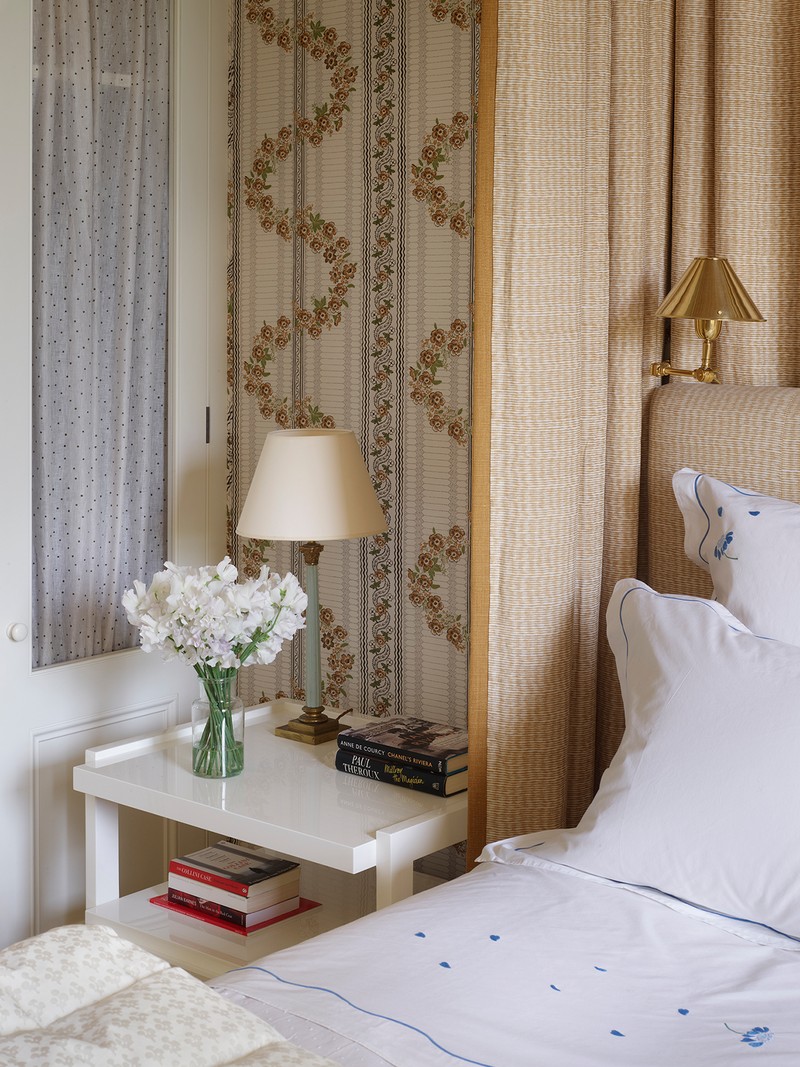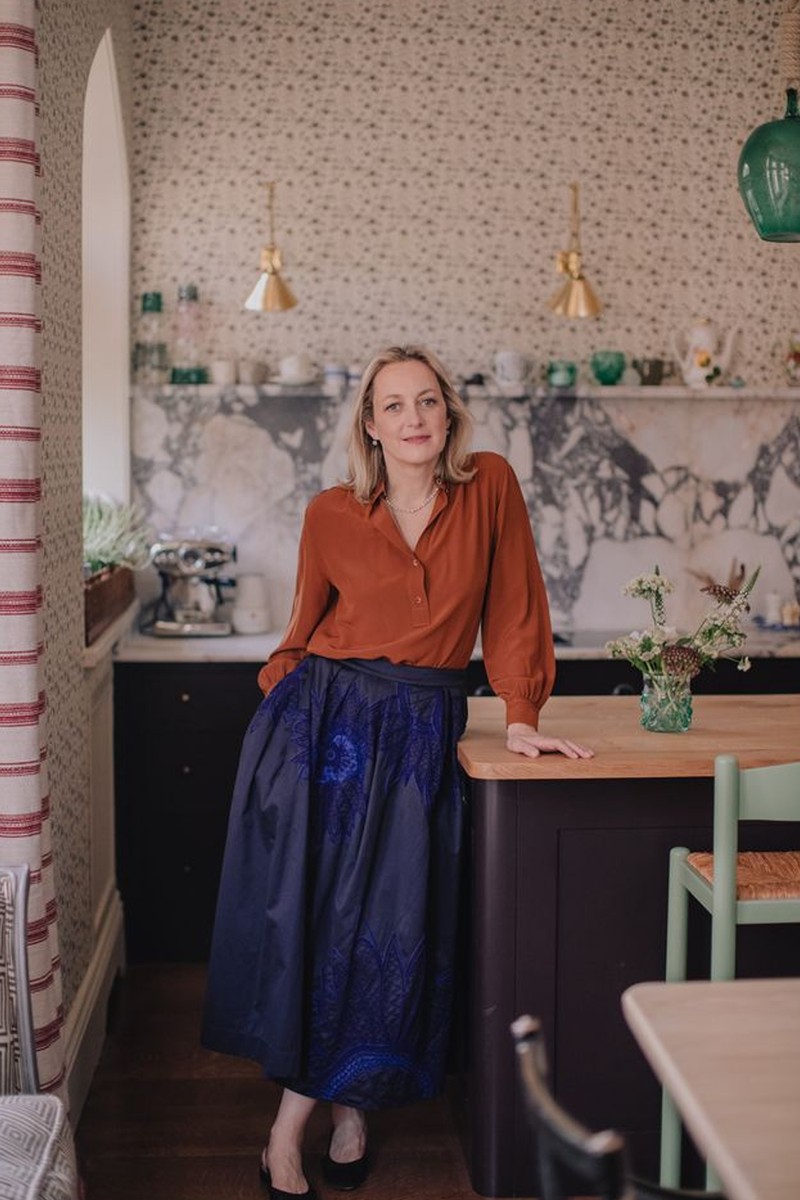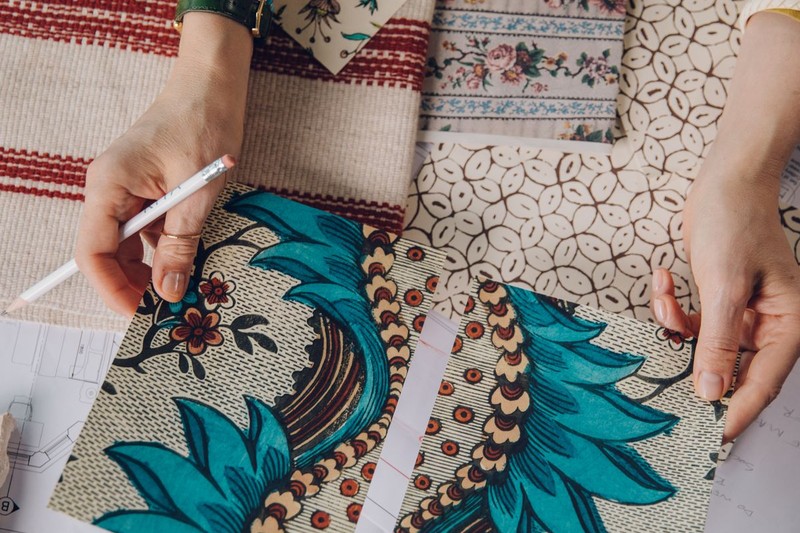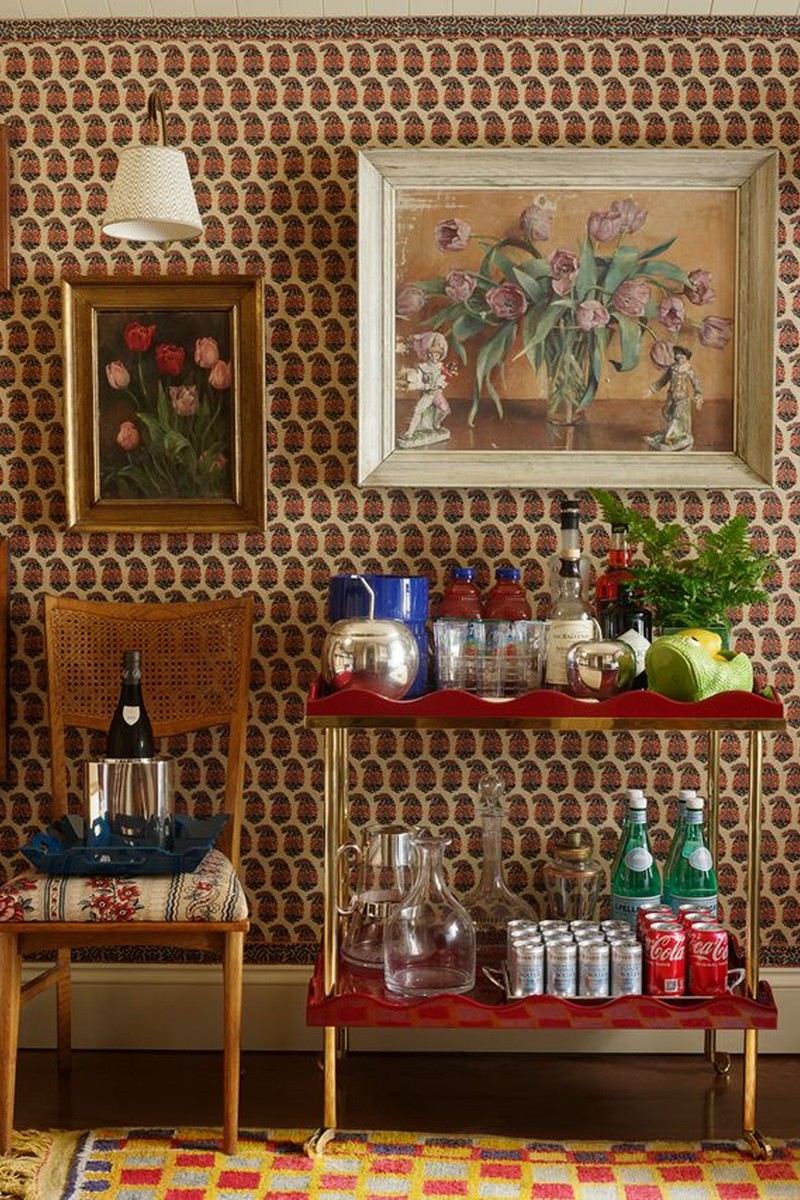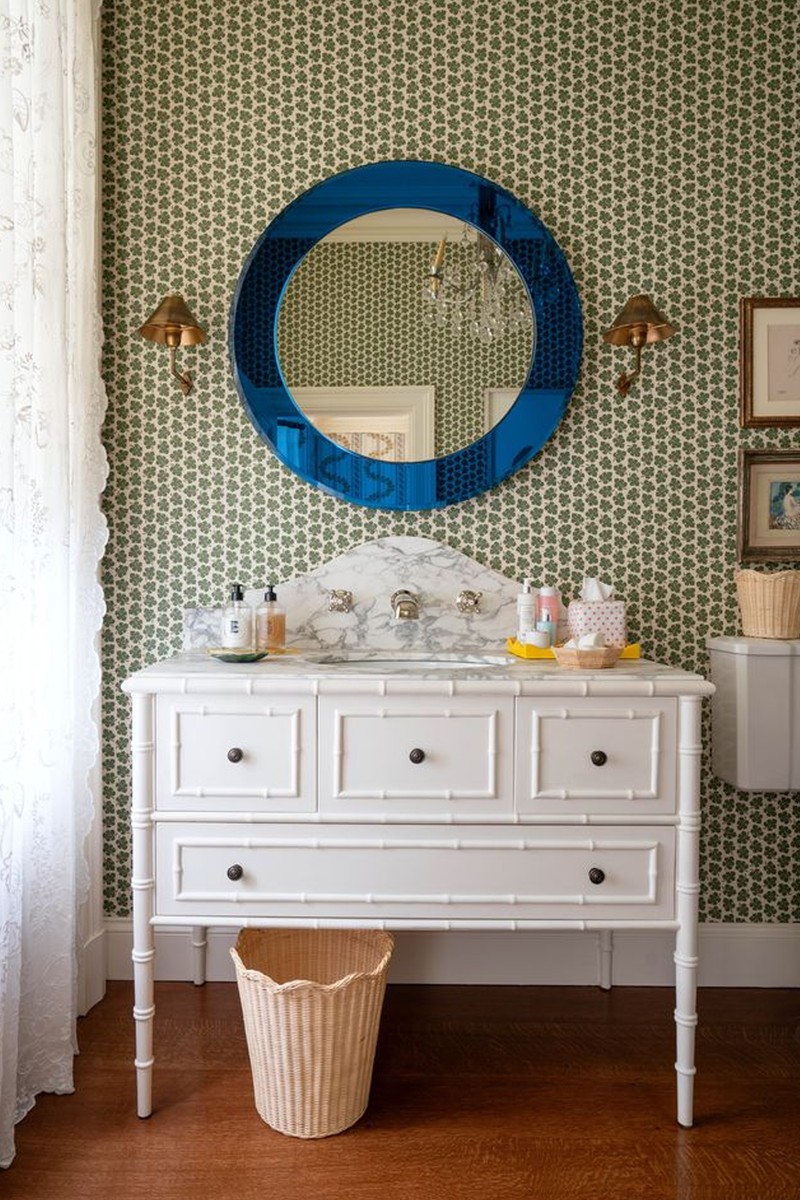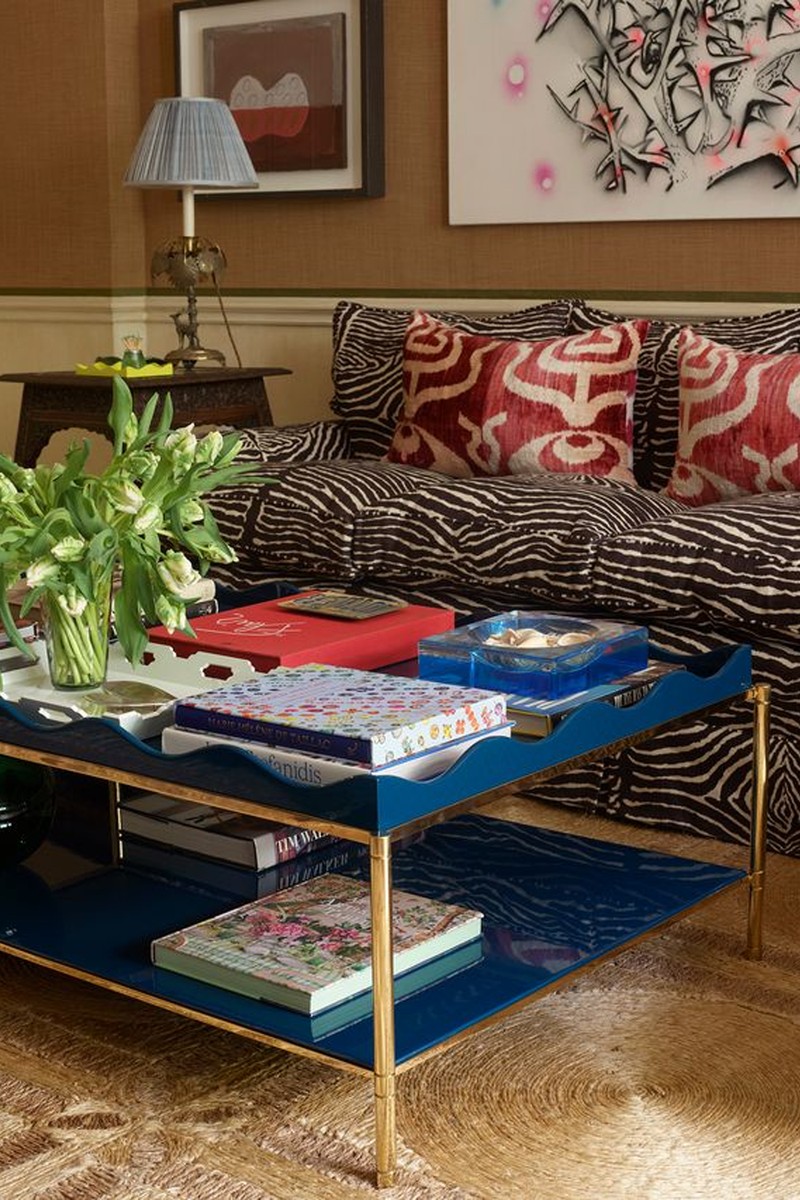Rita Konig Talks Career Highlights, Favourite Brands & More
BACKGROUND
My mother is Nina Campbell so you could say I grew up in this business. I loved looking through the fabric books in her office, and I used to go with her to building sites. But I didn’t really intend to follow her into the business. I wanted to be an actress, then a fashion designer, but then I decorated a flat with George Clarke for a client in Holland Park. It was a steep learning curve, but the rest, as they say, is history.
I’ve never had formal training. My mother showed me how to draw furniture with a scale rule, how to manage the orders and the invoices, and told me to create a folder estimate. My next project was a house on Ladbroke Square, and shortly after that, I moved to the US.
By then, I had written a lifestyle book – Domestic Bliss – and had a regular column in the Telegraph. Both were about living well in comfort – and that’s how I start a project, thinking about how the client wants to live in a house and what they expect from it. That’s the best way to make it the best it can be, rather than worrying too soon about paint colours and fabric.
Originally, I decided to go to New York just for the summer – but circumstances meant I stayed longer than anticipated. While I was busy with a few decorating projects, I met Deborah Needleman, who had just set up Domino magazine. I did these shopping stories where I’d go to a different city every month. I’d arrive in Austin or Boston or Seattle or Houston, and I’d go and find all the good shops. The photographer would arrive five days later, and we’d spend the next four days shooting. The series took off, which was great.
I returned to London and bought a flat in February 2012. By then I was also focusing on my decorating business – I now have a team of four designers and a COO. My daughter was born in February 2014 and that year, I started writing a monthly column for House & Garden, which ran until 2018.
CAREER
I see myself as a decorator, rather than a designer. Perhaps that’s because it’s the word I remember my mother using to describe herself. So much of interior decoration is embellishment. For example, I love the fabrics and furnishings in my living room, but what makes this room feel like home is the ornament I bought with a friend, the plaster flower from when I interviewed Isabel Tennant, the tray – that’s what decorating is about. Before that, it only looks like an estate agent’s magazine. I’d rather have white paint on the walls and all of my personal accessories and memorabilia. It’s what makes it feel it’s yours – that’s what makes it feel like home.
I’ve done lots of collaborations. My first was with The Lacquer Company 15 years ago. The Belle Rive tray seems to have inspired a tray renaissance. I’ve also just done a collection with Schumacher – it launches in autumn and I’ve used it throughout the renovation of my own home – and a collection with Officina, who made my bathroom vanity unit.
The first course I did with Create Academy was an instructive series. This new one goes through the renovation of my own home and covers all the anxieties that renovators go through, like budgets, and what I’ve learnt along the way.
I’ve learnt you need time to reflect and work it all out. For example, with joinery – you can have the first set of drawings and then see that it needs adjustments. That’s not you being difficult or changing your mind – that’s part of the design process and making something work. When your project builder gives you a 12-month schedule, ask them if that allows for time to review the drawings – you might need to do it more than once.
I’ve also learnt that you mustn’t make judgements around what things cost and what people want to spend money on. For example, I love to spend money on bedlinen, but I have clients who don’t want to.
DECORATING DNA
There are certain things I’ll always want to have in my home. These include artwork, objects, books and a drinks tray – a very quick way to make a place feel like someone lives there. When I moved to New York, there were things I took which still have pride of place here years later: my ‘love’ poster, which is in my daughter Margot’s playroom now; an ashtray that sits on my coffee table; and, of course, my bedlinen. After I’d been there for a while, I had all my pictures sent over because I knew once they were on the wall, it would feel like home.
I like to use colour. My very first flat was based on apple green sorbet – a piercing pale green – and a cassis sorbet, which is a very dark blackcurrant. I loved those colours together. From there, I used mauves and greens in other homes, and now this flat is more ochres, tobacco brown and burnt oranges. It’s maybe more grounding.
Colour is also a great unifier. Take my living room – there’s a lot of red linking the different elements together. Each room should have a hero fabric too – my floral chair is that. It has tobacco in it, and a dirty mauve with a boiled redcurrant jelly red and pretty spinach-y green. Everything else hangs on that. The brown linen on the walls I love, and there are some block-print fabrics which are so pretty and easy to understand. The zebra-print sofa stops it from all being too clever and tasteful.
For lighting, I would say do fewer circuits. When you enter a room, you want to be able to turn all the lights on and then dim it all. There’s an awful lot of switches these days, but I use a lighting designer called Sally Storey who does three scenes: morning, afternoon and evening. So, a bright setting for working or doing the hoovering, a setting that’s less bright, and a setting that’s dim and lovely. In my kitchen, Sally suggested using spots between my decorative pendant lights over the island, and it’s the same over my table – it beefs up the decorative lighting.
I love to use sheer fabrics on windows. In my bedroom, I want them shut all of the time as I don’t love the view. They have blackout blinds behind, which I close at night and it’s the perfect solution – much cheaper than curtains. It’s also helped by my bed, which is surrounded by a frame that is suspended from the ceiling and draped in fabric, so even though I don’t have curtains, the room feels very cosy. In my living room, I just have woven blinds that were made in India – I love them because they let the light in.
NOW, SHOP RITA’S LITTLE BLACK BOOK
Antiques:
Quindry, Maison Artefact, Woodnut Antiques, Nick Jones, Dorian Caffot, The Decorative Fair, Lorfords
Rugs:
Guinevere, Vanderhurd, Sworder Auctioneers, Drewetts
Wallpaper:
Twigs, Antionette Poisson, Schumacher
Glassware, Table Linens & Decorative Objects:
William Yeoward, Summerill & Bishop, Nina Campbell, The Lacquer Company
Books:
John Sandoe, Lutyens and Rubinstein, Heywood Hill
Bedlinen:
Porto, Monogrammed Linen Shop, Angela Wickstead
Towels:
Eiderdowns:
Blankets:
Hainsworth, Toast, Rose Uniacke
Lamps:
Gallery Des Lampes, Quindry, Palmer Antiques, Carlton Davidson
General:
Sign up to Rita’s second course with Create Academy here.
DISCLAIMER: We endeavour to always credit the correct original source of every image we use. If you think a credit may be incorrect, please contact us at info@sheerluxe.com.
